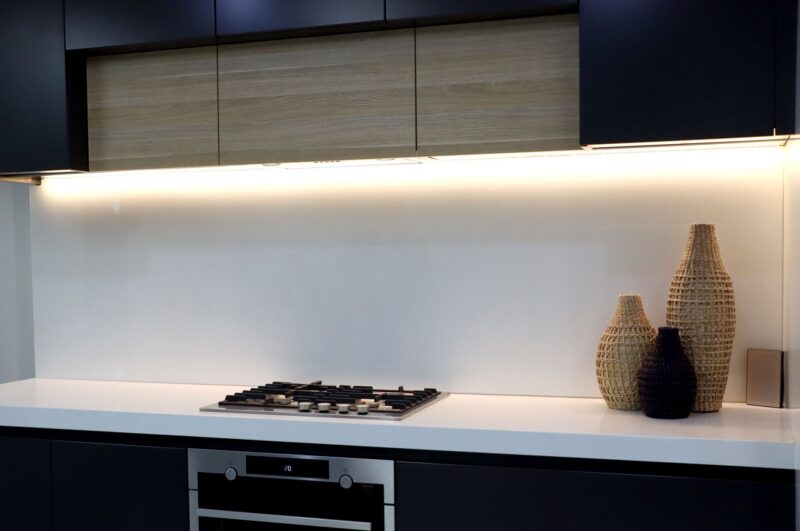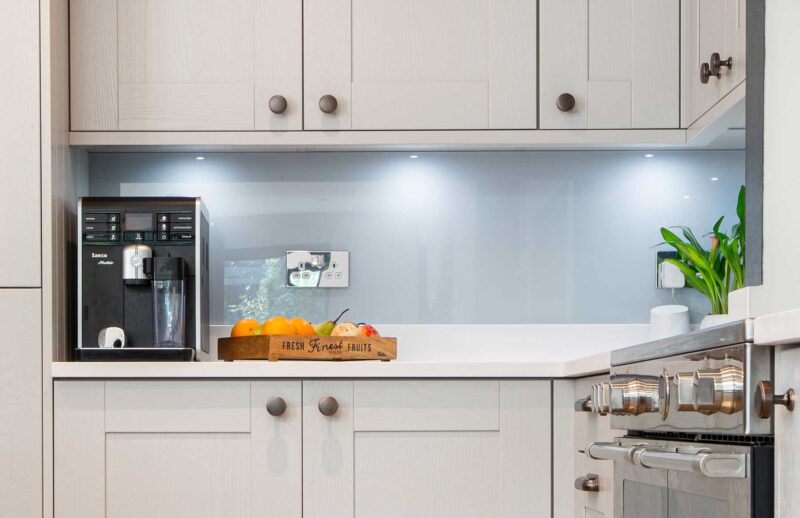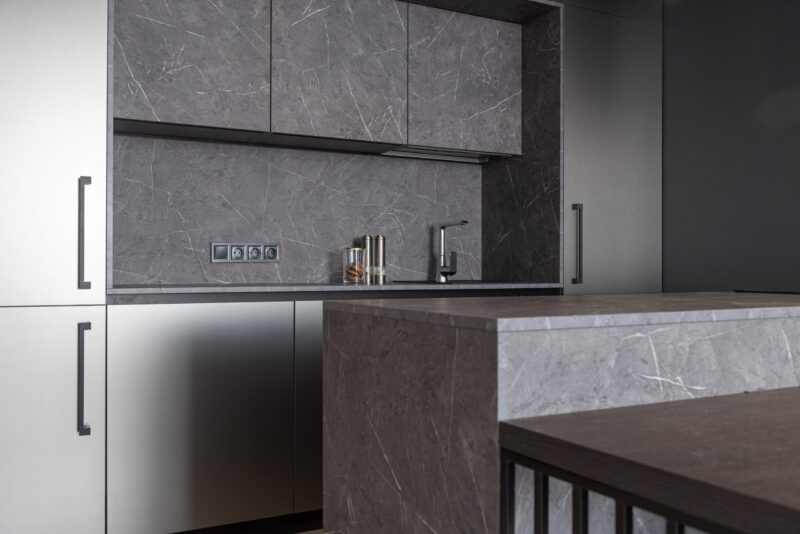When renovating a kitchen or bathroom, choosing the right wall covering is crucial. Glass splashbacks and tiles are popular options, each offering unique benefits and challenges. This blog post will guide you through ten essential tips to help you make an informed decision between these two.
Tip 1: Cost Comparison
Cost is a pivotal factor in renovation decisions. Glass splashbacks often come with a higher initial expense, considering both the material and installation costs. They are typically custom-made, which adds to the cost.
Tiles, while generally more affordable upfront, can incur varied installation expenses, influenced by the complexity of the design and the type of tile chosen.
Over time, maintenance costs also contribute to the overall expense. Tiles may necessitate more frequent grout cleaning and the occasional replacement of cracked or chipped tiles.
In contrast, glass splashbacks as seen on this website, with their robust construction, demand minimal upkeep beyond regular cleaning, thus potentially saving money in the long run.
Tip 2: Durability

Durability is crucial in areas exposed to moisture and heat, such as kitchens and bathrooms. Glass splashbacks excel in this regard, boasting remarkable durability. They are resistant to heat, moisture, and staining, making them a practical choice for high-use areas.
However, it’s important to note that if they do break, which is rare, the replacement cost can be significant.
On the other hand, tiles, while also durable, may be prone to cracking or chipping over time, particularly in areas of frequent use or high impact. With appropriate care and maintenance, both materials can offer years of service, proving to be solid investments for any home.
Tip 3: Aesthetics
Aesthetics significantly influence your decision. Glass splashbacks provide a sleek and contemporary look, offering a smooth and uninterrupted finish. They are available in an array of colors and prints, enabling a modern and clean aesthetic.
Tiles, in contrast, present a broader spectrum of design versatility, ranging from timeless subway tiles to more intricate and detailed mosaic patterns.
This wide variety of styles, textures, and colors allows tiles to fit into any design scheme, from the traditional to the avant-garde. The decision largely rests on the specific visual ambiance you wish to create in your space.
Tip 4: Ease of Cleaning
In areas like kitchens and bathrooms, the ease of cleaning is a vital consideration. Glass splashbacks stand out in this regard, offering a hassle-free cleaning experience. Their smooth, non-porous surface can be swiftly wiped down, making them ideal for spaces where hygiene is paramount.
They are particularly advantageous for busy households or commercial settings where time and ease are essential.
Tiles, while also cleanable, come with the added challenge of grout lines. These lines can harbor dirt and grime, requiring more effort and specific cleaning solutions to maintain their appearance. This aspect is particularly important for those seeking low-maintenance and hygienic wall covering options.
Tip 5: Installation Process
The installation process is a key differentiator between glass splashbacks and tiles. Glass splashbacks require professional installation due to the need for precise measurements and handling. Their installation is typically quicker but leaves little room for error. This makes them less suited for DIY projects.
Tiles, in contrast, offer more leeway in installation. They can be a viable option for those with DIY skills, but achieving a professional-looking finish, particularly with intricate patterns or in corners, can be a challenge.
This flexibility in installation can be a deciding factor for those who enjoy hands-on home improvement projects.
Tip 6: Customization
Customization is a significant aspect of home décor. Glass splashbacks offer a degree of customization in terms of color and print but are limited by their format, generally being large, single pieces.
This can be a limitation when dealing with irregular wall spaces or when a more intricate design is desired. Tiles, however, provide extensive customization options. They allow for creative freedom with the choice of size, shape, color, texture, and layout, making it possible to create unique and personalized designs.
This adaptability makes tiles a popular choice for those looking to infuse their personal style and character into their space.
Tip 7: Eco-Friendliness
Environmental impact is increasingly important in home renovations. Glass splashbacks, particularly those made from recycled glass, are a sustainable choice. They often require less energy to produce than new materials, reducing their environmental footprint.
On the other hand, tiles vary widely in sustainability. Ceramic and porcelain tiles are among the eco-friendlier options, often made from natural clay and sometimes incorporating recycled materials.
It’s also important to consider the manufacturing process, as some tiles require extensive resources to produce. When choosing your materials, factor in not only their immediate impact but also their long-term sustainability and disposal methods.
Tip 8: Resale Value

Resale value is a critical consideration in home improvements. Both glass splashbacks and tiles can add significant value to your property. Modern and sleek, glass splashbacks often appeal to those looking for contemporary home designs.
They can make spaces appear larger and more open, a desirable feature in the real estate market. Tiles, with their timeless appeal, cater to a broad range of tastes, from classic to modern.
The key is to choose a style that complements the overall aesthetic of your home. Neutral and versatile designs tend to have a broader appeal, potentially increasing the resale value of your home.
Tip 9: Maintenance
Regular maintenance is crucial for the longevity and appearance of your kitchen or bathroom. Glass splashbacks offer a significant advantage in this area. Their smooth, non-porous surface is resistant to stains and grime, requiring just a simple wipe-down to maintain their shine.
On the other hand, tiled surfaces demand more detailed care. The grout between tiles can become a breeding ground for mold and mildew if not cleaned regularly.
This can be a time-consuming process, especially in larger or heavily-used areas. Choosing high-quality grout and sealing it properly can mitigate these issues, but it still requires ongoing attention.
Tip 10: Personal Preference
Ultimately, the decision comes down to personal preference. Your choice should reflect your style and meet your lifestyle needs. Glass splashbacks offer a modern, sleek look and are available in a range of colors and finishes to suit any taste.
They can make a statement or blend seamlessly with your decor. Tiles, with their vast array of designs, shapes, and textures, offer a more traditional aesthetic and can be arranged in unique patterns for a personalized touch.
Consider your daily routine, aesthetic preferences, and long-term plans for your space. Whether you prioritize ease of cleaning, a specific style, or durability, ensure your choice aligns with your personal preferences and lifestyle.
Conclusion

Choosing between glass splashbacks and tiles involves considering cost, durability, aesthetics, ease of cleaning, installation, customization, eco-friendliness, resale value, maintenance, and personal preference.
Each option has its pros and cons, and the best choice depends on your specific needs and style. Consider these tips carefully to make a decision that you will be happy with for years to come.
Related Posts:
- How to Install Commercial Vinyl Tiles: Pro Tips for…
- What Is Architectural Glass? A Comprehensive Guide…
- How to Repair a Leaking Bathroom Faucet: Quick Fixes…
- Is Colorado School of Mines Football Good? - In…
- What to Look for When Leasing a Car: Tips for a…
- How To Install Kodi On Nvidia Shield And Nvidia Shield Pro













